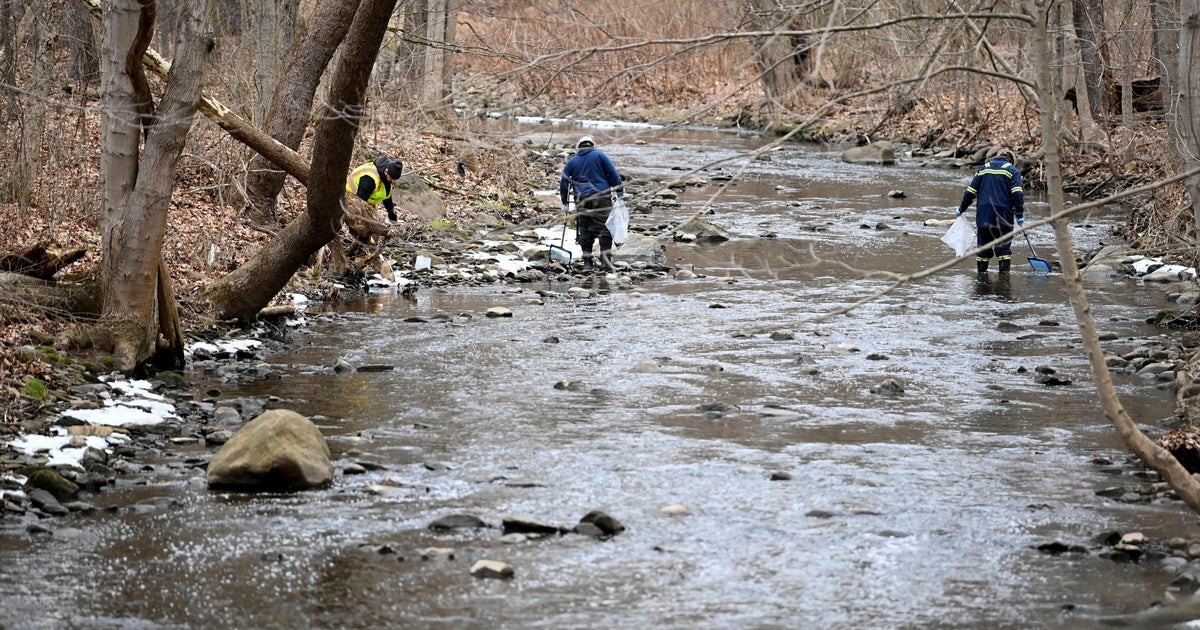Ohio Train Derailment: Long-Term Effects Of Toxic Chemical Contamination

Table of Contents
Long-Term Health Effects on Residents
The immediate aftermath of the Ohio train derailment saw residents experiencing a range of acute health issues directly linked to the released chemicals. However, the long-term health effects of exposure to vinyl chloride and other hazardous substances remain a significant concern.
Immediate and Delayed Health Impacts
The immediate symptoms experienced by residents included coughing, nausea, headaches, and eye irritation. These acute symptoms, while distressing, may pale in comparison to the potential for delayed health impacts. Exposure to vinyl chloride, a known carcinogen, significantly increases the risk of several serious health problems.
- Cancer: Vinyl chloride is strongly linked to several types of cancer, including liver cancer, brain cancer, and lung cancer. The long-latency period for cancer development means that the full extent of the carcinogenic effects of this derailment may not be apparent for years to come.
- Respiratory Illnesses: Exposure to the toxic chemicals released can lead to chronic respiratory problems such as asthma, bronchitis, and emphysema, particularly affecting individuals with pre-existing conditions.
- Reproductive Issues: Studies have linked vinyl chloride exposure to reproductive problems in both men and women, including reduced fertility and birth defects.
- Other Health Concerns: Other potential long-term health effects include liver damage, nervous system disorders, and immune system dysfunction.
Ongoing health monitoring and support services are crucial for the affected residents. Several studies are currently underway to assess the long-term health consequences of the derailment, providing vital data for future medical interventions and public health policies.
Vulnerable Populations
Children, the elderly, and individuals with pre-existing health conditions are particularly vulnerable to the effects of toxic chemical exposure. Their bodies are less resilient to the harmful effects of these substances, leading to more severe and long-lasting consequences.
- Children: Developing bodies are more susceptible to the harmful effects of toxins, potentially leading to developmental delays and increased cancer risk later in life.
- Elderly: The elderly often have weakened immune systems and pre-existing health conditions, making them more susceptible to the effects of toxic exposure.
- Pre-existing Conditions: Individuals with respiratory illnesses, cardiovascular diseases, or compromised immune systems are at a heightened risk of experiencing severe health complications.
Detailed epidemiological studies are essential to quantify the impact on these vulnerable populations and provide targeted support and medical interventions.
Environmental Contamination and Ecological Damage
The Ohio train derailment resulted in significant environmental contamination, posing long-term threats to the ecosystem. The widespread release of vinyl chloride and other hazardous substances has impacted both soil and water resources.
Soil and Water Contamination
The derailment caused widespread soil and water contamination. Vinyl chloride, a volatile organic compound, can leach into groundwater, contaminating drinking water sources and posing a threat to human health and the environment.
- Extent of Contamination: The full extent of the soil and water contamination remains to be determined, but initial assessments suggest a significant area is affected. Detailed soil and water sampling are ongoing to map the contamination and guide remediation efforts.
- Agricultural Impact: The contamination of soil poses a direct threat to agriculture, impacting crop yields and potentially contaminating food sources. Long-term monitoring of agricultural lands is essential.
- Waterway Contamination: The potential for the contamination to spread through waterways presents a significant ecological concern, with the potential for wide-ranging damage to aquatic life and downstream communities.
Impact on Wildlife
The chemical spill has had devastating effects on local wildlife. Exposure to toxic chemicals can cause immediate mortality, or lead to long-term health problems and reproductive issues.
- Animal Populations: Reports of dead and sick animals, including birds and mammals, indicate a severe impact on local fauna.
- Aquatic Life: Aquatic species are particularly vulnerable to water contamination, with potential for widespread mortality and disruption of aquatic ecosystems.
- Long-term Biodiversity Impacts: The long-term effects on biodiversity and ecosystem health are still unfolding, requiring careful monitoring and research. The loss of key species can have cascading effects throughout the entire food web.
The Challenges of Remediation and Long-Term Cleanup
Cleaning up the contamination resulting from the Ohio train derailment presents significant challenges. The complex nature of the contamination, the sheer scale of the affected area, and the potential for long-term risks all contribute to the difficulty of the remediation process.
Complexity of the Cleanup Process
The cleanup process involves several complex steps, including:
- Soil Removal and Disposal: Contaminated soil may need to be excavated and disposed of in hazardous waste landfills, a costly and time-consuming process.
- Groundwater Remediation: Techniques like pump-and-treat systems may be necessary to remove contaminated groundwater, a process which can take years to complete.
- Air Monitoring and Control: Continuous air monitoring and control measures are necessary to mitigate the release of volatile chemicals into the atmosphere.
The extensive time and resources required for the cleanup underline the scale of this environmental disaster.
Monitoring and Future Risk Assessment
Long-term monitoring and risk assessment are crucial for understanding the ongoing effects of the derailment. This requires a multi-faceted approach:
- Environmental Monitoring: Continuous monitoring of soil, water, and air quality is necessary to track the spread of contamination and assess the effectiveness of remediation efforts.
- Human Health Monitoring: Long-term health monitoring of residents living near the derailment site is vital to identify potential long-term health effects and provide appropriate medical care.
- Data Analysis and Reporting: Regular data analysis and transparent reporting are essential to inform public health policies and guide remediation strategies.
Conclusion:
The Ohio train derailment serves as a stark reminder of the devastating long-term consequences of toxic chemical contamination. The impact on human health, the environment, and the local community will be felt for years to come. Understanding the potential long-term effects of this disaster is crucial for developing effective remediation strategies, providing adequate support to affected individuals, and preventing similar incidents in the future. Continued monitoring, thorough research, and transparent communication about the Ohio train derailment and its long-term effects are essential for protecting public health and environmental safety. We must remain vigilant and advocate for comprehensive policies to prevent future catastrophes involving the transportation and handling of hazardous materials. Learn more about the ongoing efforts to address the consequences of the Ohio train derailment and its long-term impact.

Featured Posts
-
 Understanding Body Art Ariana Grandes Tattoos And Their Significance
Apr 27, 2025
Understanding Body Art Ariana Grandes Tattoos And Their Significance
Apr 27, 2025 -
 Indian Wells 2024 Eliminacion Inesperada De Una Pre Clasificada
Apr 27, 2025
Indian Wells 2024 Eliminacion Inesperada De Una Pre Clasificada
Apr 27, 2025 -
 Belinda Bencic Campeona Nueve Meses Despues Del Parto
Apr 27, 2025
Belinda Bencic Campeona Nueve Meses Despues Del Parto
Apr 27, 2025 -
 Alberto Ardila Olivares Estrategia Y Garantia De Gol
Apr 27, 2025
Alberto Ardila Olivares Estrategia Y Garantia De Gol
Apr 27, 2025 -
 Grand National Horse Mortality Data And Concerns Ahead Of 2025
Apr 27, 2025
Grand National Horse Mortality Data And Concerns Ahead Of 2025
Apr 27, 2025
